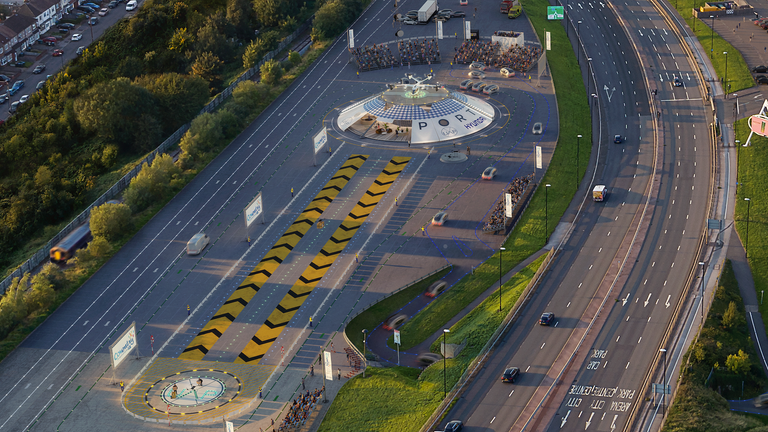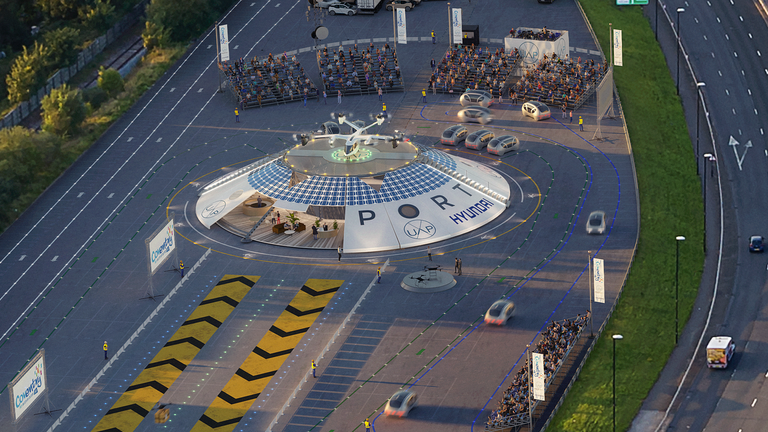A pop-up urban airport which will showcase so-called “flying cars” and drones is to be opened in Coventry, with government support for programmes that tackle road congestion and pollution.
As shown by slick computer generated marketing imagery, the zero-emission hub, called Air One, will be located close to the Ricoh Arena in the north of the city.
It has received a £1.2m government grant, which has been matched by Hyundai, and is scheduled to open in November as part of celebrations marking Coventry as the UK City of Culture.
Developed by Urban Air Port, a London-based infrastructure-as-a-service company, the hub is designed to demonstrate how so-called “flying cars” and cargo drones will integrate with the infrastructure they will need to be used in urban environments.
Despite being popularly referred to as “flying cars”, EVTOL (electric vertical take-off and landing) vehicles are basically electric helicopters, not cars that will be driven on roads and then also flown.
The lightweight vehicles could potentially be used to taxi people between sky scraper rooftops, or – as Urban Air Port designs show – from landing hubs on the River Thames to elsewhere in London.
Speaking to Sky News, Urban Air Port’s chief executive Ricky Sandhu said he “totally agreed” that the term flying cars was misleading.
“Lets bring it a bit down to Earth and talk about the infrastructure that will be needed,” he said.
Air One is one of three modular infrastructure designs – alongside Ground One and Water One, which go on land and water respectively – that would allow various flying vehicles to dock and land.
The idea is to demonstrate how future air taxis and cargo drones will integrate with infrastructure that can be installed at multiple points around a city.
It provides space for charging, for take-off and for landing – with the take-off platform being elevated high enough from the ground to reduce noise levels, something which poses a number of regulatory hurdles for traditional heliports.
“That means we can scale our infrastructure [based on how the market develops]. It has to be flexible, we can’t spend 15 years building Terminal 5,” he added.
Among the devices to be trialled in Coventry will be large cargo drones developed by Malloy Aeronautics, a British technology company, although there will not be any passenger flights.
“I don’t think anybody can do actual passenger flights yet,” Mr Sandhu said
Hyundai, which is spending $1.5bn on developing a number of EVTOL vehicles, will be showcasing one of its development vehicles there with a level of demonstration below actual flight.
Instead Air One will be demonstrating the passenger processing that its infrastructure provides, from check-in through to the lounge and boarding preparations.



